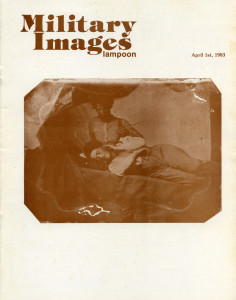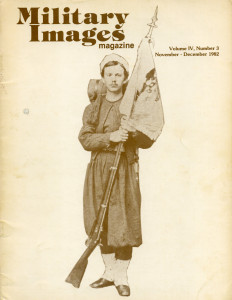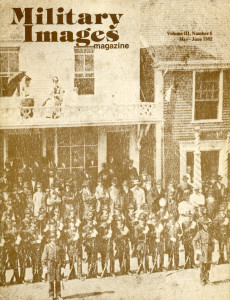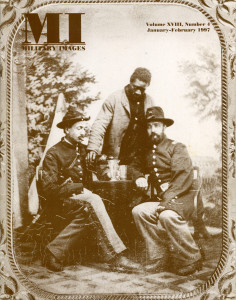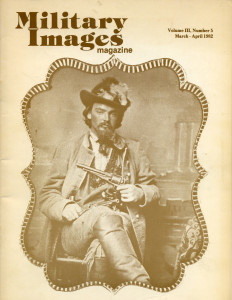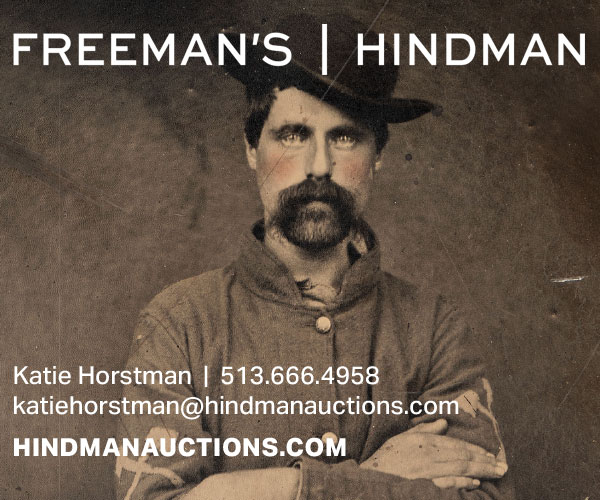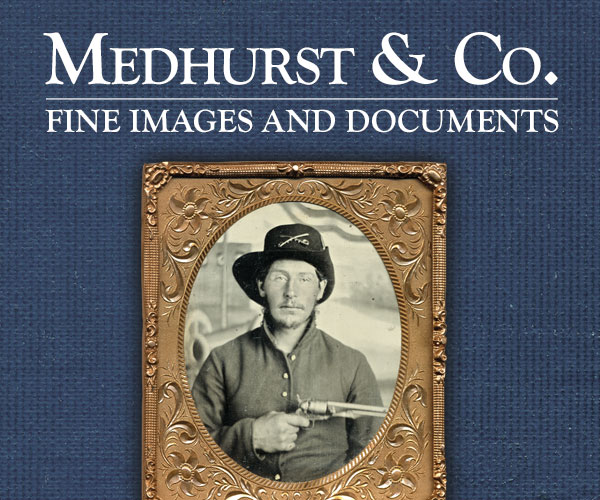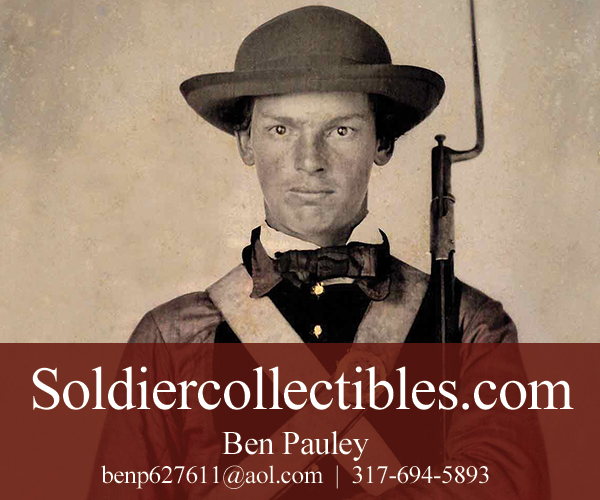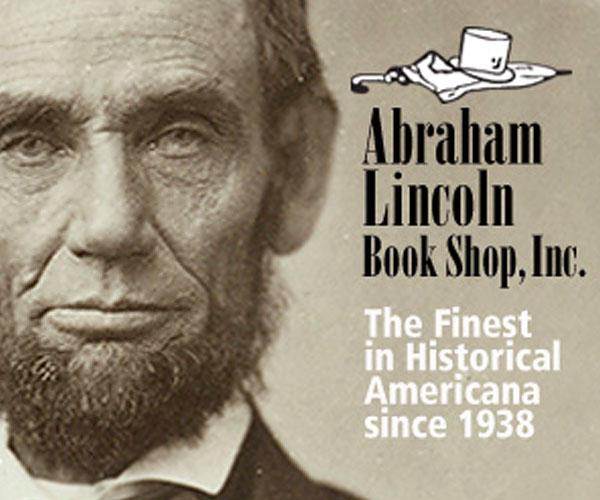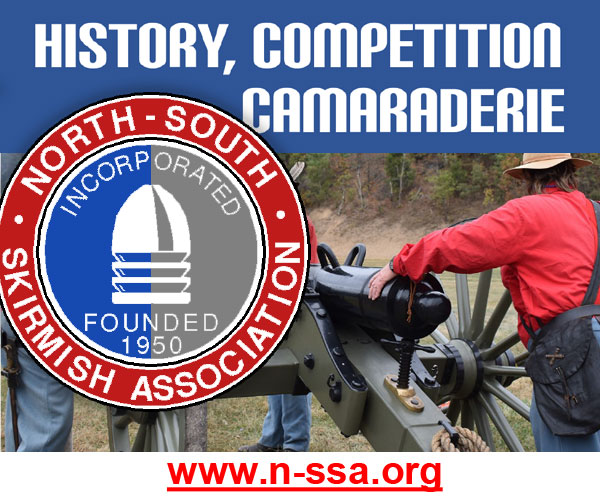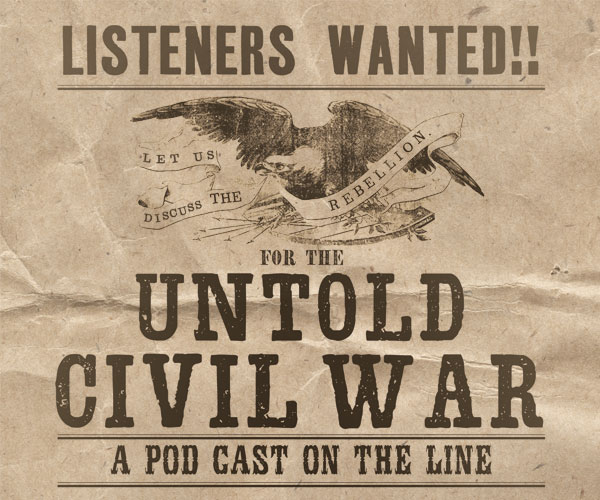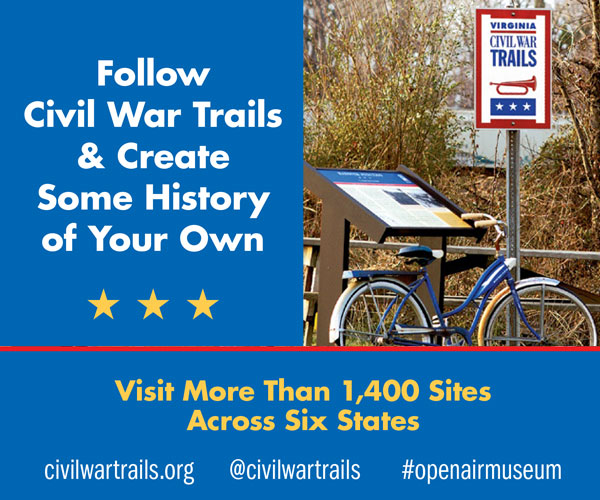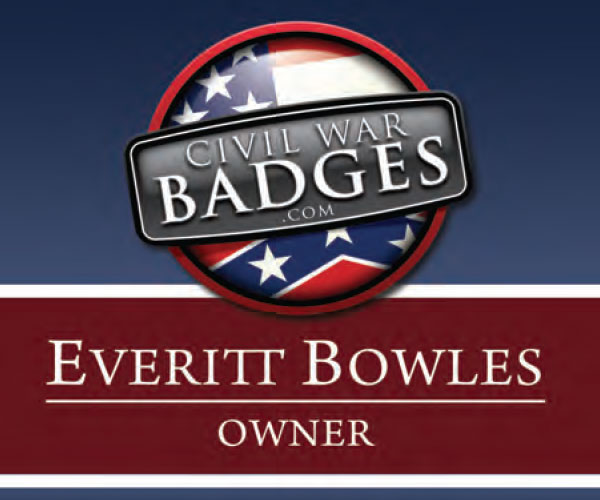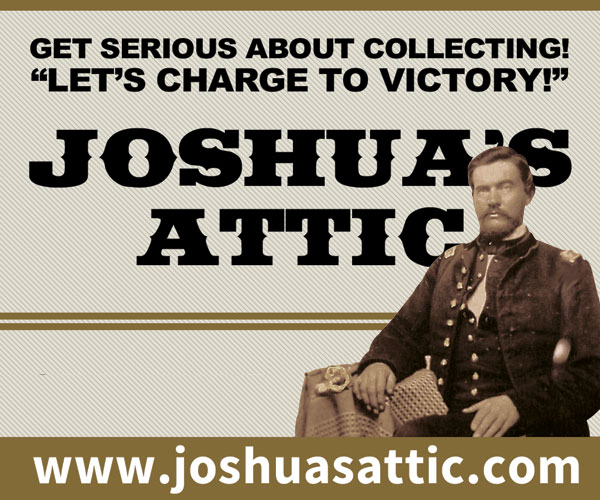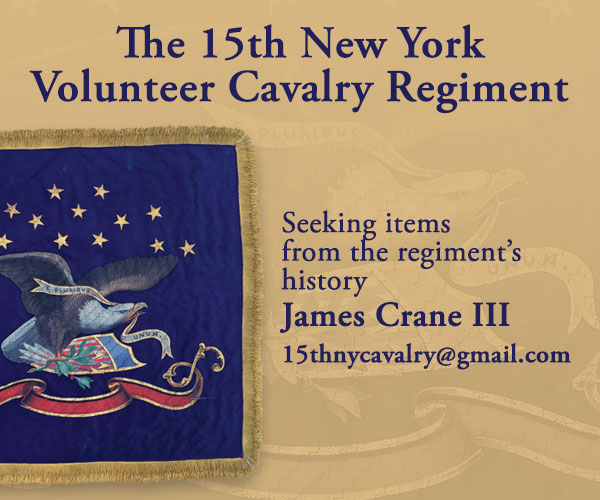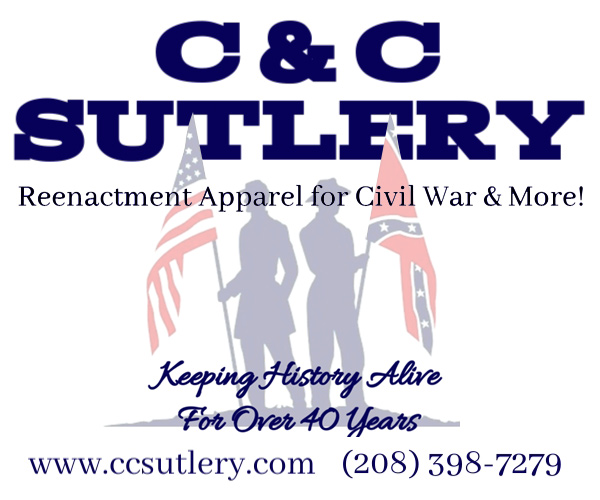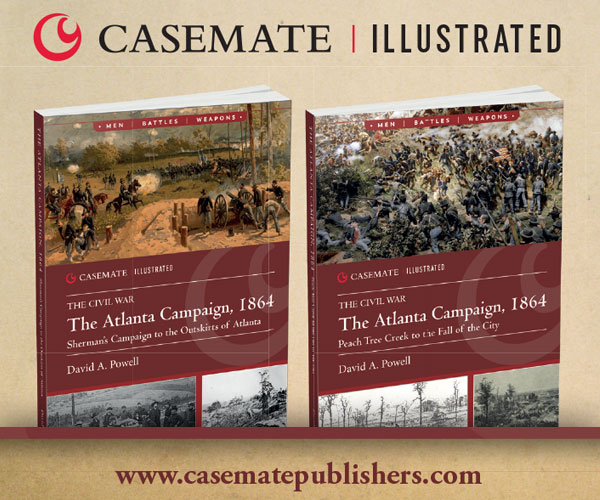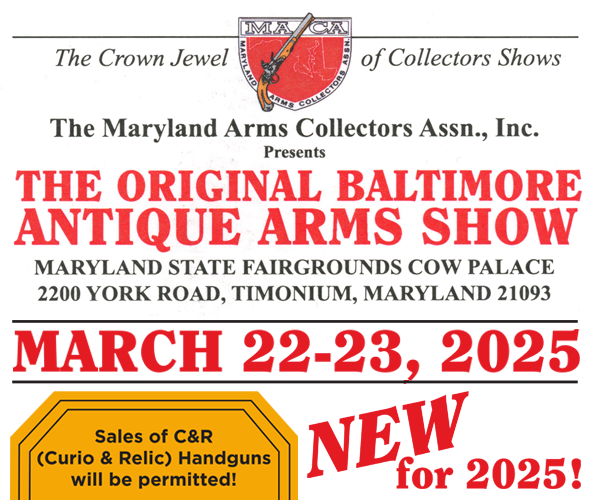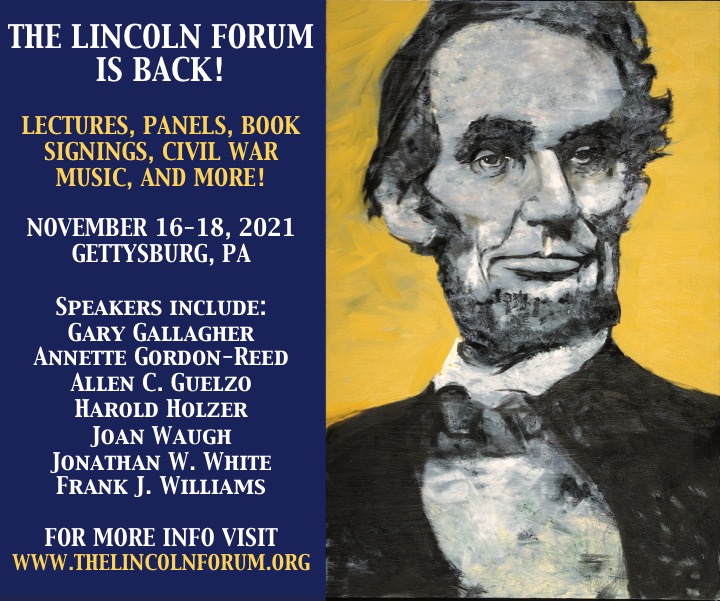The complete issue
Vol. 4, No. 6
(32 pages)
Print edition: Visit our store to check availability
Digital edition: Visit JSTOR.org to purchase
Subscribe to MI
Explore the MI Archives: Browse | Advanced search | Tutorial
Inside
Cover Image
A sailor from the Civil War era poses for the camera, holding the hand of a little girl who is probably his daughter.
Editor’s Desk (inside front cover)
The editor advises that if readers are interested in purchasing a binder for their back issues of Military Images, they should let him know and if enough interest is shown, these can be made available. Additionally, extra issues of the lampoon issue remain available. The editor also adds that a cyclorama of Custer’s Last Stand that was made in 1888 will be featured in a future issue.
Mail Call (p. 2)
Readers provide additional insight to prior issues and images from previous issues.
Passing in Review (pp. 3-4)
Two books are reviewed in this issue of Military Images. First is Custer Victorious: The Civil War Battles of George Armstrong Custer by Gregory J.W. Urwin recounts the successes of Custer between his achievements at Gettysburg through the end of the war at Appomattox. Accompanied by images and primary source materials, the text is reviewed as sometimes unbalanced in Custer’s favor rather than remaining balanced throughout. Next under review is John Bell Hood and the War for Southern Independence, written by Richard McMurry. In a lengthy review, the details of Hood are grooming as a military officer, his career in Texas in the 2nd U.S. Cavalry, and his Civil War career are outlined. The author compares Hood’s military life with his equally tragic personal life, giving this book a rather unique insight into one of the South’s interesting personalities.
Foreign Naval Officers During the American Civil War by Philip Katcher (pp. 5-7)
Subtitled as “a mis-identification guide for image collectors,” this collection of nine images of British, Russian, Prussian, Spanish, French, and Dutch naval officers of varying rank. Each image has a detailed caption that discusses the unique identifying features of each uniform and how each could be confused with a Confederate or Federal naval officers.
Clergy in Uniform: Uniforms of Volunteer Chaplains in the Union Army, 1861-1865 by Michael J. Winey (pp. 8-12)
They were not assigned rank and were expected to be non-combatants, but the chaplains of the Union Army saw themselves as being within the officer corps, having the pay of a captain of cavalry. Many wore weapons and sabers, as did officers, and were often attached to regimental staff. Chaplains were to wear black coats, trousers, shoes, and hats, but as the pictorial article shows in 14 images, chaplains often personalized their wartime wear. The uniforms shown range from a few images that are almost completely regulation to one that is almost completely military. A pair of images show different chaplains from wearing uniform variants designed by Colonel Ambrose E. Burnside, with the chaplain wearing the officer version of the smock-like coat and the assistant chaplain wearing the enlisted pullover smock blouse worn by the Rhode Island enlisted men. One image is of Father Thomas Scully of the 9th Massachusetts Infantry wearing his Catholic vestments; his unit was heavily Irish in composition.
Vignette: John T. Hull, Company E, 2nd Virginia Infantry, Stonewall Brigade by Larry Allen (p. 15)
Two images accompany this vignette. The first is a sixth-plate ambrotype that shows Lt. John Hull after recovering from his wound at Chancellorsville, while the second is his post-war wedding photograph with his wife, Mary Ann, in October 1881. Enlisting in Raleigh Colston’s “Hedgesville Blues” two days after Virginia left the Union, John and his brothers George and Dallas saw action at the battles with the rest of the “Stonewall Brigade” from Manassas onward, with John’s wound in the neck sending him to hospitals until his discharge in January 1865.
Salty Dogs by Howard Hoffman (pp. 16-18)
Ten different images from the author’s collection show the men of the navy in various studio poses. Many are unidentified, however the identity of their ships can be seen in reverse in the images. One pair of images is of Acting Paymaster A.A. Harrison wearing his winter uniform in one image (taken in Little Rock, Arkansas in December 1863) and his summer uniform in the other (taken in Pine Bluff, Arkansas in August 1864). An image of a sailor with an unique arm insignia is also presented, with the apparent pioneer insignia showing him as a carpenter’s mate.
Vignette: George H.T. Macrae, Company F, 6th Virginia Cavalry by Wendell W. Lang, Jr. (p. 19)
Wearing a polka dot shirt under his Federal frock coat, George Macrae first joined up in Captain Edward B. Powell’s “Fairfax Cavalry” at Alexandria, Virginia. Eventually serving under Turner Ashby in the Shenandoah and then under General William E. “Grumble” Jones, Macrae (demoted to private) was wounded and left behind during raids on the Baltimore & Ohio in West Virginia. He was treated by Federal hospitals and then transferred to Point Lookout, Maryland as a P.O.W. before being exchanged on Christmas Day 1863. Macrae spent the rest of the war in Richmond working at General Hospital No. 9, indicating that his wounds did not allow him to return to cavalry duty.
Antebellum Photography, Part IV: Analysis of Pre-War Naval Uniforms by John A. Stacey (pp. 20-21)
Five portraits allow the reader to get a glimpse of the uniform devices used to determine naval rank. The size of buttons, number and width of gold lace braid, the number of oak leaf sprigs on a collar, and the placement of buttons on a sleeve all helped the author determine the approximate dates that the portraits were taken based on the uniform regulations in place at the time.
The Eagle Bearers: Company C, 8th Wisconsin Volunteer Infantry by Richard H. Zeitlin (pp. 22-25)
Several images accompany this article, but none rival the image of “Old Abe” who became the mascot of Company C right before the “Eau Claire Badgers” left to report to training camp in September 1861. Known thenceforth as the Eagle Regiment, the unit fought in several battles, as indicated on the photograph of their battle flag. Their original organizer, Captain John E. Perkins was killed at Farmington, Mississippi, and was succeeded by Lieutenant Victor Wolf, who had previous experience in the U.S. Army. “Old Abe” survived the war, and lived in the Wisconsin State Capitol Building until his death in 1881. Images of several veterans of the Eagle Regiment, taken as they mustered out of service, are included.
U.S.S. Pennsylvania Landing Party by Ronald Beifuss (pp. 26-29)
An unusual series of ten images of an amphibious landing and other exercises taken in approximately 1908 are featured. The photographer and the context of the collection is unknown, but seems to suggest exercises in the Philippines or another semi-tropical region.
Stragglers (pp. 30-31)
This issue of Military Images challenges readers to “Find the Civilian(s)” in this selection of five images of men in sailor-type dress.
Back Image
The image on the back of the magazine could be a sutler’s wagon being raided, or supplies being loaded, or something completely different.

